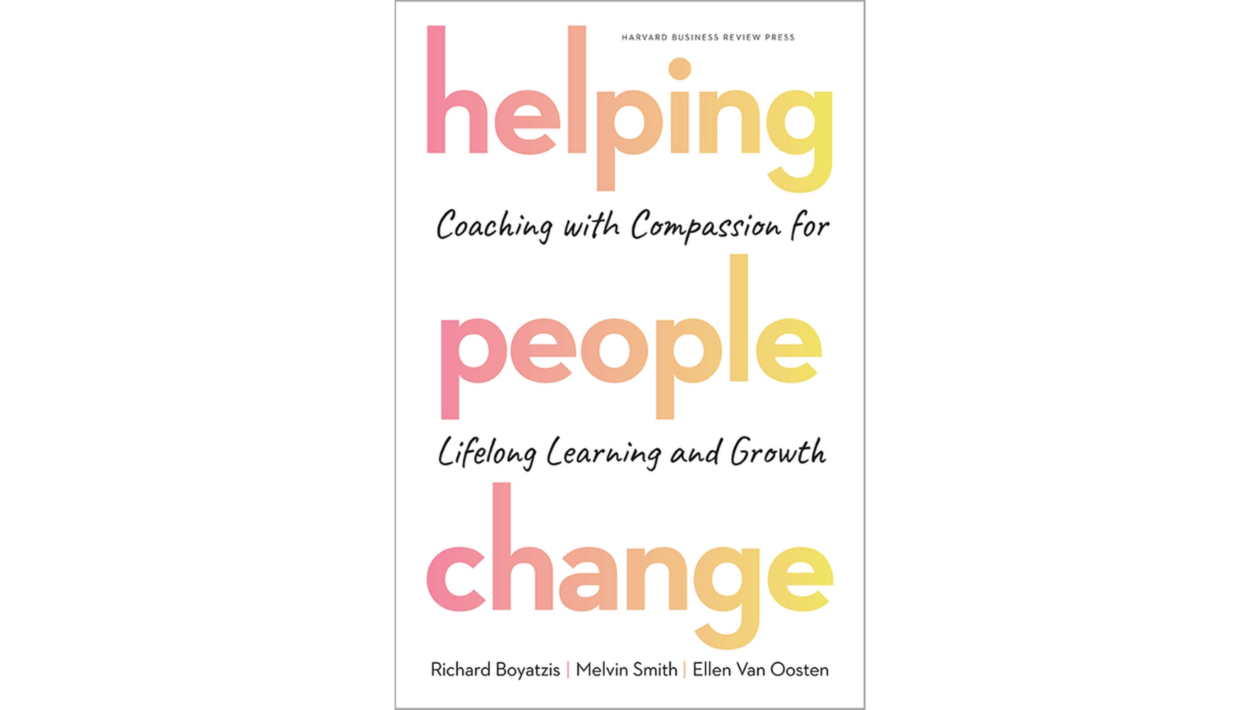By R. E. Boyatzis, M. Smith, & E. Van Oosten
Boston, MA: Harvard Business Review Press (2019)
Reviewed by WALTER A. CARDENAS
Boyatzis, Smith, and Oosten have done a terrific job of putting forth a great resource to help people and challenge coaching’s status quo. Coaching traditionally has comprised a nonpersonal approach, focusing on helping a person achieve better performance in a specific area without focusing on building a relationship. The research presented in this book shows that “when a resonant relationship is created, the coach and the person being coached become attuned as they operate on the same emotional wavelength” (p. 19). This makes coaching more effective and inspires holistic changes.
When focused on fixing a superficial problem, a person will experience limited long-term results dealing with underlying issues. The problem-centered approach “does not work well, if at all, to motivate sustained learning, change, or adaptation. It might, at times, lead to quick corrective action” (p. 20). It will not bring sustainable results. Instead of just focusing on a task, people must understand the power of a “long-term dream or vision, people draw energy from that vision and are able to sustain their effort to change” (p. 20).
There is a noticeable difference when a person is coached with compassion versus when coached for compliance. Compliance coaching focuses on a specific task or goal that a person wants to accomplish. An example of this is a marathon runner trying to improve his/her running time. Here, a coach will focus on helping the marathon runner reach that goal. Coaching with compassion will look at the person as a whole and help develop them, not only for the now but also for the long term. This type of coaching shows “a genuine sense of caring and concern, focusing on the other person, providing support and encouragement, and facilitating the discovery and pursuit of that person’s dreams and passions” (p. 20).
The authors shared their research on how coaching for compliance generates negative emotional attractors (NEA) which activates the sympathetic nervous system, whose primary process stimulates the body’s fight or flight response. Coaching with compassion taps into the positive emotional attractor (PEA) which activates “the parasympathetic nervous system, which sets into motion a set of physiological responses that put the person in a more relaxed and open state” (p. 72). This is useful for leaders who desire to help and inspire people. It is also useful for clergy as they disciple or help individuals or a congregation. Knowing how to help people activate the parasympathetic nervous system by asking the right questions at the right time (coachable moments) and showing compassion can be a game-changer for leaders who want to create a lasting impact on the people.
This resource is valuable, and it allows people in leadership positions to learn the value of doing the right type of coaching. It provides readers with stories to illustrate how coaching with compassion could make a difference and offers exercises that help people tap into the PEA. The authors say coaching for compliance is needed, but only “in small doses” (p. 256), in specific situations. The authors maintain that coaching with compassion should be the norm.
I recommend this book for anyone who wants to help people by investing in them, caring for the person, and walking side-by-side with them as long-lasting changes are made. “Great helpers and coaches inspire, encourage, and support others in the pursuit of their dreams and the achievement of their full potential” (p. 257).
WALTER CARDENAS is a pastor of the Mountain View Conference of Seventh-day Adventists in Parkersburg, West Virginia, USA.

